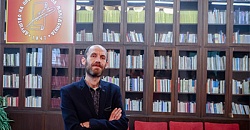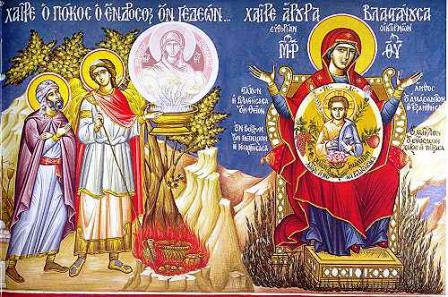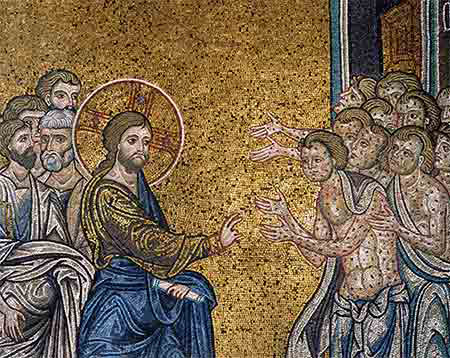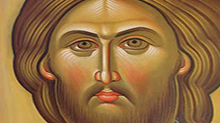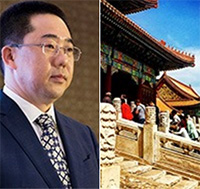 |
| H.E. Mr. Zhang Zuo, Ambassador of People's Republic of China |
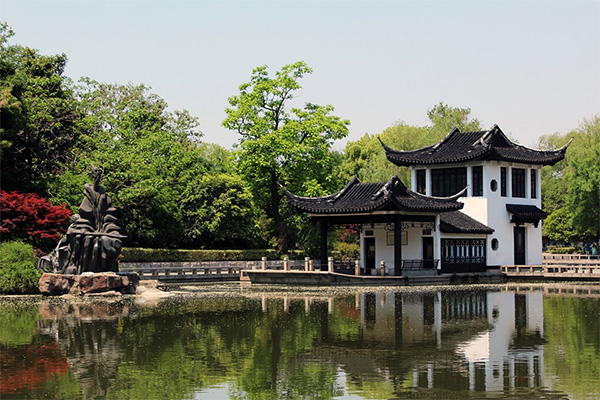
The World Significance of Harmonious Coexistence of Multiple Religions in China
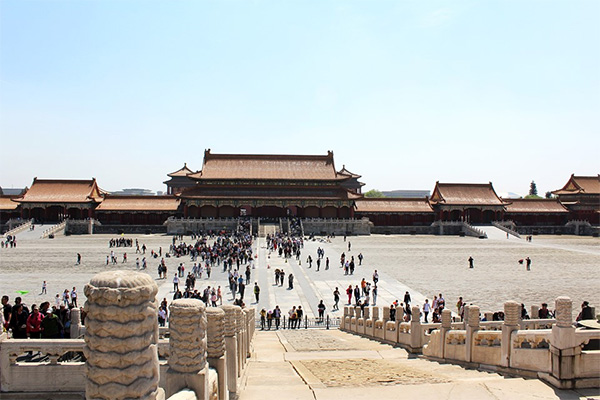
Through its 5000-year uninterrupted history, the Chinese civilization has been constantly refreshed through inclusive development.Ever since Buddhism spreading eastward to China andsinicization of Islam in ancient timeall the wayto“learning from the West” drive in the 19th century, New Culture Movement, the introduction of Maxism and socialist thoughts into China in the 20th century to all-round Opening-up after 1978, not only there has never been a single conflict between religions or clash of civilizations in China, but a general pattern of five major religions (i.e. Buddhism, Taoism, Islam, Catholic, Protestant) as well as folk beliefs and original faiths of ethnic groups has been formed and lived to this day. This time-tested experience of harmonious coexistence of multiple religions in China carries important messages for the world.
1. The philosophy of “To be harmonious but different” laid the cornerstone for the harmonious coexistence of multiple religions in China. Around 2500 years ago, during the historical periods of Spring & Autumn and Warring Kingdoms of China, when hundreds of different theories competed with each other for orthodox, Confucius, the great founder of Confucianism, judged that "Gentlemen are harmonious with each other but remains different". This concept has since become one of the fundamental characteristics and value of the Chinese culture, the cornerstone of harmony among multiple religions in China. The Chinese people’s unique religious tolerance was also formed on this concept.
Since ancient times, China has had the idea and proposition of respecting multiple religions and beliefs. Confucius considered traditional religious rites have important social enlightening function. As for the relationship between government and religion, Confucius put forward the idea of " when serving the people, respecting their gods, but at a distance.""Respect" means to give full respect and understanding to all kinds of foreign or indigenous religions, and "being at a distance" means to draw a line between religion and political ideology, not targeted at any particular religion. “Respect but at a distance” became underlying principle for the state to manage religious affairs and formulate policies. Later, the central governments of each dynasty carried out the policy of coexistence of multiple religions and customs-based governance, and adopted religious tolerance policy of all-embracing, universal-applying to foreign religions such as Nestorianism, Manichaeism, Judaism and Christianity introduced in the Tang Dynasty (618A.D.-907A.D.).
In Song Dynasty(960-1279), groups of Jewish people settled at the then cosmopolitan capital Kaifeng. As Cecil Ross wrote in The Brief Jewish History, “in Asia the only Jewish settlements that are not worrisome are those in China. The local rulers have never treated one part of the people or another differently according to their religious beliefs”.
During the long process of China's historical development, it is precisely adhering to views on religion, such as “to be harmonious but different” and “respect but at a distance” that different ethnic cultures and religions blended, coexisted, and learned from each other, and became organic parts of China's excellent traditional culture. Buddhism was originated in ancient India. In the last years of the Western Han Dynasty (circa 2 B.C.), Buddhism was introduced into China. After long-term evolution, Buddhism absorbed elements from Confucian and Taoist philosophy, finally formed a Buddhist culture with Chinese characteristics, which left a profound impact on Chinese religious beliefs, philosophy, literature and art, etiquette and customs, as well as language.
The policy of religious tolerance was carried out to make religious diversity a link of political unity. For example, in the Qing Dynasty, through the link of Tibetan Buddhism, the Torgut Mongolian tribe broke through the obstacles set by the Tsarist Russia and resolutely returned to the motherland. During the period of the Republic of China (1912-1949), the central government sent envoys to three major temples in Lhasa to worship Buddha and make tributes, and won the support of Tibetan religious elites, and ultimately thwarted the British attempt to split Tibet.
Since the founding of the people's Republic of China, the state respects citizens' freedom of religious belief, treats all religions equally, and make efforts to construct positive and healthy religious relations, especially relations between the Party, the government and religion, society and religion, different religions at home, indigenous religions and foreign religions, believers and non-believers. The harmony of religious relations has been effectively promoted. At present, there are close to 200 million believers in China, and 20,000 religious figures of all ethnic groups have served as representatives of People's Congresses or members of Political Consultative Conferences at all levels, actively participating in and deliberating on policies-making and implementing democratic supervision.
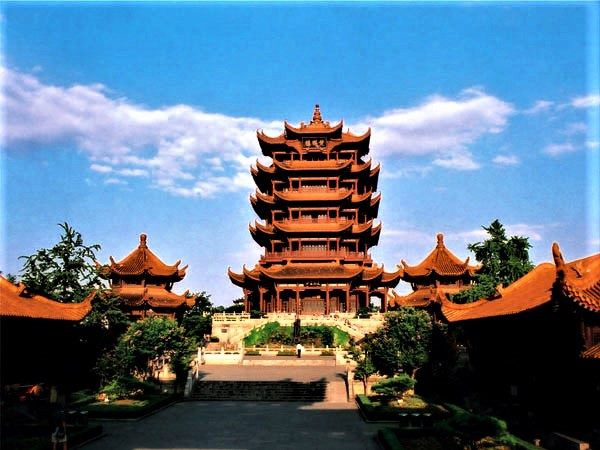
2. Blending and symbiosis are at the root of the harmonious coexistence of multiple religions in China. The Confucian civilization advocates that “students should ask for teachings from the teachers. No teachers should take the initiative to find students”. So it does not support promoting and realizing Confucian thoughts and ideas by force. Therefore, in China there has never been Inquisition or religious war out of different doctrines. On the contrary, religions in China found a way to blend and localize, to the extent of having symbiosis.
In the early days of ancient China, through the myths and legends of "Three Emperors and Five Sovereigns", a traditional cultural common ground of "respecting the heaven and following the ways of ancestors" was found. Confucianism stressed "benevolent people love others". Taoism advocated the government should govern by respecting nature and do nothing that goes against nature. Buddhism adhered to the doctrine of "doing no evil, pursuing all good". An interactive pattern with Confucianism as the central pillar supplemented by Buddhism and Taoism took shape in China.
No religion has developed into the state religion in China. In their collisions with the society, religions got chances of blending with each other, and finally got inherited because they took roots among the people. For example, as early as mid-7th century, after Islam spreading into China, through two-way interpretations borrowing ideas from each other, Islam and Confucianism established interrelation. Islam became the belief of most people of 10 ethnic groups in China, including Hui, Uygur, Kazak, Dongxiang, Kirgiz, Sala, Tajik, Uzbek, Baoan and Tatar. By adapting to the development and transition of Chinese society, Islamic civilization has become an integral component of the Chinese culture and played an active role in the Chinese society. Harmony and co-existence between Islamic and Confucian civilizations have left rich legacy in peaceful communication of mankind and mutual learning of civilizations.

Christianity was introduced into China both in Tang and Yuan Dynasties, but failed to take root. It came to China for the third time in the late Ming and early Qing Dynasty, and made some progress in building churches and preaching, and began to be accepted by the upper class of China.
However, during the period from the 17th century to the 18th century, Western missionaries argued about the traditional Chinese rites. On the question whether Chinese Christian followers are allowed to participate in traditional activities, like rituals worshiping Confucius and ancestors, the Pope expressly prohibited Chinese followers from doing so. That position directly upset the Qing Dynasty. The missionary activities were severely restricted, leading to another interruption of the spread of Christianity in China.
The fourth time Christianity came to China was accompanied by the imperialist warships and guns. After the Opium War, with signing of a series of unequal treaties, the privileges of preaching in China were guaranteed. Christianity expanded power of the church on a large scale into the heartland of China. At the end of the 19th century and the beginning of the 20th century, during the struggle for national independence and social progress, religious citizens carried out self-reliance and indigenization movements, through which the Christian culture and the traditional Chinese culture gradually merged and learned to coexist.
After the founding of the People's Republic of China, all religions continued their path of sinicization, and bring reforms to the religious systems to meet the requirements of profound social change. Buddhism, Taoism and Islam carried out the democratic reform of the religious systems, by abolishing the feudal hierarchy and the system of oppression and exploitation in religion, and got rid of the control and utilization of the reactionary ruling class. Through the anti-imperialist patriotic movement, Chinese Catholicism and Christianity embarked on the road of independent and self-run church and removed control and utilization of imperialists and foreign forces. Nowadays, Chinese religions are providing the world with examples of harmonious inter-religion relations and important demonstrations of peaceful dialogue among civilizations.
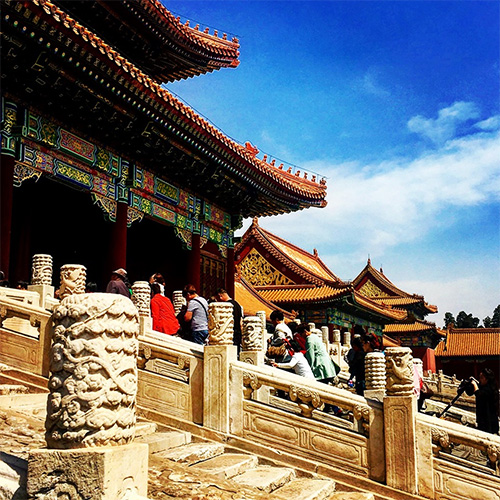
3. Rule-based administration of religious affairs is a good recipe for multiple religions in China to coexist harmoniously. The Confucian belief "Do not impose on others what you yourself do not desire" has become the guideline for politics and relations between various civilizations. All the central governments of the dynasties paid attention to administrative management of religious organizations and activities, in which relevant legal systems and institutions played great role.
After the Qin Dynasty unified China in 221 B.C., the Law on Temples was established, with the religious rituals specifically stipulated. As an integral part of the Qin laws, the Law on Temples set up Taibu as official to perform divination; Fengchang as official to oversee ancestral ceremonies; Taizhu as official to arrange sacrifice-offerings to Heaven and Earth. In later dynasties, the religious administrative institutions were generally called Taichang or Minister for Taichang Temples.
On the basis of Qin Law on Temples, the Han Dynasty (202BC-220AD) formulated the legal norms for national sacrifice-offerings, including Edict on Ancestral Temple of Han Dynasty, Law on Ceremonial Music and etc.. Since the gradual expansion of Buddhism in the Wei Jin Southern and Northern Dynasties during the 3-6th century, the religion-related legal norms has become more extensive. Meanwhile, administrative institutions for religious affairs have been formed. The Office for Monks was established to strengthen the management for monks and nuns affairs. In the Sui Dynasty(581AD-618AD) , the first religious law in Chinese history was established, which formed the legal norm for management of Buddhism.
In Tang Dynasty (618A.D.-907A.D.), besides the special legislation on Monks and Taoists, there were also relevant provisions on religion in other laws. Religious organizations and their activities became an important aspect of social life and thus incorporated into the orbit of national legal system. In the Song (960-1279), Yuan(1271-1368), Ming(1368-1644) and Qing (1636-1912) Dynasties, the legal systems of religious affairs were modified on the basis of the previous dynasties, and the system of Office for Monks was gradually improved. Following the experience of managing Buddhism, the government set up institutions to manage Taoism, Christianity and Islam, and strictly managed religious organizations and activities, such as approving the establishment of temples and monasteries, issuing religious IDs, and prohibiting large-scale religious gatherings. Meanwhile, the government left detailed religious affairs to run by monks themselves.
The Yuan and Qing dynasties attached great importance to uniting religious leaders of ethnic minorities and set up institutions to manage religious affairs of ethnic minorities. Such institutions was called Xuanzheng Yuan(Administration for Buddhism and Tibetan Affairs) in the Yuan Dynasty, and Li Fan Yuan (Administration for Mongolia, Hui and Tibetan Affairs) in the Qing Dynasty. In view of the special status of the Grand Living Buddha of Tibetan Buddhism in the social life of Tibet, in the Ming and Qing Dynasties, the reincarnation procedures of the Living Buddhas were gradually brought under jurisdiction of the central government and national laws and regulations .
In 1792, the Qing government issued a decree to implement the "Golden Urn Lottery" system for the Grand Living Buddhas above Hutuktu Level. Later was formed a full set of rigorous and well-organized religious rituals and historical convention, including the search for spiritual children and the "Golden Urn Lottery". The reincarnation of the Living Buddha produced by the "Golden Urn Lottery" shall be submitted to the central government for approval before the child can officially succeed to the Living Buddha. Special cases requesting exemption from the "Golden Urn Lottery" shall also be submitted to the central government for approval. The "Golden Urn Lottery" system upholds the supreme authority of the central government, preserves national sovereignty, and also reflects Śākyamuni's "judgment" in terms of religion.
Since the end of the Cold War, in view of conflicts among different religions and sects in the world, religious issues have posed difficult problems for social, national and global governance. The Communist Party of China insists on treating religious issues as a major issue in national governance, adhering to law-based management of religious affairs, formulating laws and regulations such as Regulations on Religious Affairs, the Measures on the Management of the Reincarnation of Living Buddhas of Tibetan Buddhism, among other laws and regulations. A new realm of governance of religious affairs with Chinese characteristics was created. It not only contributes to Chinese governance of religious affairs, but also sets a model for global governance of religious affairs.
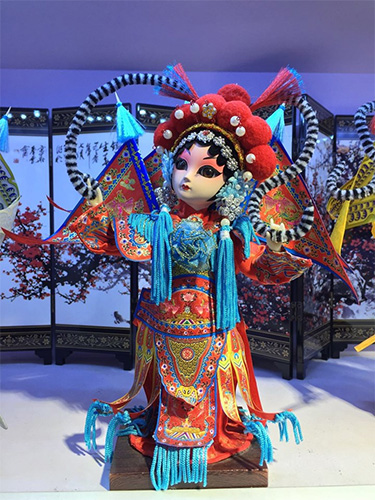
4. The separation of government and religion is the fundamental principle for multiple religions in China to maintain harmonious coexistence. Since ancient times, China, in the spirit of seeking unity of Man and nature, has a long history of pursuing unity of laws and regulations. The political design, "the central government should be responsible for national affairs. The Sovereign has the final say, whom local officials should serve" raised over 2,200 years ago by a great Legalist thinker, Han Feizi, laid the theoretical foundation for the unification of China, and was widely accepted by later generations.
In the Chinese history, the emperor has been regarded by secular society as the "son of Heaven" and the emperor's power is "ordained by Heaven". However, in the relationship between the secular regime and the religious power, the central governments of all dynasties believed the religious power should not interfere with the secular regime, which has become an iron law. However, it does not mean the separation of government and religion should be the ultimate goal in itself, but on the basis of such separation, the government should strive for a harmonious benign interactive relationship with religions.
For example, during periods of the Yuan, Ming, Qing dynasties and the Republic of China, whenever Tibetan Buddhist monks went to the heartland for religious purposes, the government would accord them high courtesy, but restrict residents in the heartland to become believers in Tibetan Buddhism. Since the peaceful liberation of Tibet in 1951, the central government has respected the religious beliefs and customs of the Tibetan people.
On March 10, 1959, a reactionary group of Tibetan upper class headed by the Dalai Lama launched an all-round armed rebellion in an attempt to split the motherland. With the overwhelming support of the liberated serfs, the rebellion was soon quashed. As a result, the feudal serfdom was completely abolished. The separation of government and religion was realized. And citizens' right to freedom of religious belief was fully respected. The state ensures normal religious activities are to be protected from any interference. The state has undertaken maintenance, renovation and restoration of temples, cultural relics and historic sites, including famous Potala Palace, Jokhang temple, Tashilhunpo temple and other cultural relics under national protection and important temples of all sects of Tibetan Buddhism. The Buddhist community is supported by the state in collating and publishing Tibetan Buddhist scriptures, such as the Tripitaka in Tibetan language, and in establishing the High-level Tibetan Buddhism College of China in Beijing and the Tibetan Buddhism Institute in Lhasa. Tibetan culture and religion has entered a new era of development.
As early as 60 B.C., the Western Han Dynasty (202B.C.-25A.D.) set up the Frontier Authority in Xinjiang, marking official incorporation of Xinjiang into the territory of China. Chinese became one of the common languages in the official documents of the Xinjiang regions. Since then, the central governments of later dynasties have continuously strengthened administration of Xinjiang. The Tang Dynasty implemented separate administration systems for the Han people and ethnic groups. Special prefecture-level governments were set up in areas inhabited mainly by ethnic groups, so that their people could be governed by its own customs.
In the Yuan Dynasty, its Lingbei province included a part of Xinjiang and a part of Chagatai Khanate (the vassal state established by Chagatai, the second son of Genghis Khan of Mongolia). The communication between all ethnic groups in Xinjiang became much closer. The principal composition of the Uygur ancestors was the “Huihe” people in the Sui and Tang Dynasties. In 744A.D., Gulifeiluo, the leader who united Huihe tribes, was recognized and given titles by the Tang Dynasty. In 788A.D., Huihe leader made a request to the Tang Dynasty to change the name of its tribe to "Huihu". In the Yuan Dynasty, the Huihu were also known as “Viur” in Chinese. In 1934, local government of Xinjiang officially confirmed the Chinese name of this ethnic group as “Uyghur”, which means “to safeguard unity of you and me” and for the first time explicitly stated the original meaning of Uyghur. Xinjiang's history with religions shows that religions must adapt to its environment in order to be able to continue and develop, and convergence and coexistence has long been the mainstream of inter-religions relations in Xinjiang.
Since the founding of the People's Republic of China, the right to freedom of religious belief has been protected by the Constitution and laws, which is consistent with relevant international instruments and conventions. The Constitution clearly stipulates that "citizens of the People's Republic of China have freedom of religious belief." The government shall, in accordance with the law, manage religious affairs related to the interests of the state and the public interest of the society, and ensure that no organization or individual may use religion to carry out activities that disrupt social order, damage the physical and mental health of citizens, undermine the national interests, the public interest of the society as well as the legitimate rights and interests of citizens, and ensure that religious organizations and religious affairs are not interfered by foreign forces.
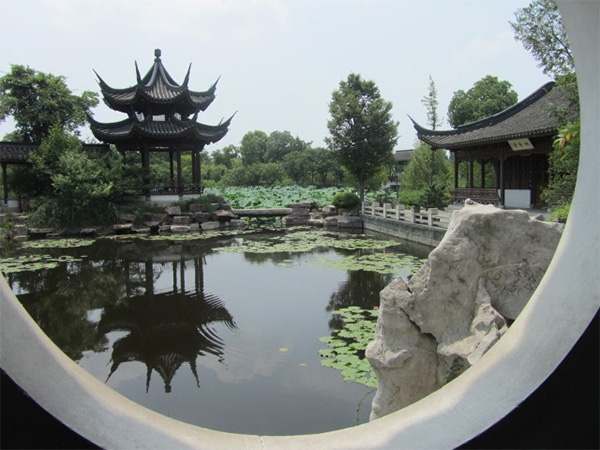
5. To let everything takes its own course yet for a shared social order is the principle for harmonious coexistence of multiple religions in China. Historically, Confucianism advocated that “all living creatures grow together without harming each other, and roads run parallel without interfering with one another.”While adhering to this principle, the secular government has also been wary of the expansion of religious power. When the religious power expands excessively, to the extent of shaking the foundation of the regime, restrictive measures will be taken.
Typical examples are Four Incidents of Persecutions of Buddhists in Chinese history. These incidents are mainly driven by political or economic purposes. Two major reasons were behind one such incident in the Northern Wei Dynasty (386A.D.-534A.D.). Firstly, the growing large number of monks led by the rapid development of Buddhism resulted in severe shortage of soldiers. Secondly, Buddhist temples occupied too much land but paid no tax. The national treasury was drained. The imperial court was endangered and as a reaction, launched a persecution campaign against Buddhists. Naturally, restricting religion with political power did not work out. When ascending the throne, the new emperor had to change his predecessor's policy. And Buddhism was revitalized.
All the Chinese governments of every dynasty opposed and fought against cults. In the Han Dynasty, cults were called “evil beliefs”; in the Sui and Tang Dynasties, they were called “heresies”; in the Song Dynasty, their followers were denounced as “demon-worshipers”; in the Yuan and Ming Dynasties, they were called “black art”; in the Qing Dynasty, they were named “evil cults”. For example, the White Lotus Cult appeared over 800 years ago has been denounced as “heterodoxy” by the central government of every successive dynasty. The founding emperor of the Ming Dynasty spared no efforts in combating secret cult organizations such as the White Lotus. The Qing Dynasty also dealt heavy blows to the uprisings of the White Lotus.
While adhering to the principle of “letting everything takes its own course yet for a shared social order”, the central governments of all successive dynasties maintained a red line that religious organizations and activities in regions of ethnic minorities must safeguard the unity of the motherland and follow the command of the central government.
Before the 4th century B.C., primitive religions were practiced in Xinjiang region. After the 1st century B.C. when Buddhism was introduced into Xinjiang, gradually a pattern emerged where multiple religions coexisted with Buddhism as the major one. In the 4-10th century, Zoroastrianism became prevalent throughout Xinjiang, particularly in the Turpan area. Taoism was introduced into Xinjiang around the 5th century and spread to most parts of Xinjiang during the Qing Dynasty. Manichaeism and Nestorianism were introduced into Xinjiang one after the other in the 6th century. From the late 9th to early 10th centuries, Islam was introduced into southern Xinjiang. By the early 16th century, many religions coexisted in Xinjiang, with Islam as the predominant one. In the early 17th century, the Oirat Mongols accepted Tibetan Buddhism. From the 18th century, Protestantism, Catholicism and the Orthodox Church were introduced into Xinjiang. A pattern featuring coexistence of multiple religions, with Islam as the principal one, continues today in Xinjiang.
Since the mix of separatists, religious extremists and terrorists appeared in Xinjiang from the 1990s, the Chinese government has been upholding the rule of law and a law-based approach in combating terrorism and extremism. At the same time, learning from effective international practices of counter-terrorism and de-radicalization, the Chinese government established vocational education and training centers in accordance with laws and ground situation of Xinjiang. These centers deliver a curriculum that includes standard spoken and written Chinese, legal knowledge, vocational skills and de-radicalization. Thanks to the preventive counter-terrorism and de-radicalization efforts, Xinjiang, a place once suffered gravely from terrorism, hasn't seen a single violent, terrorist incident over several years. People's right to life, health and development and other basic rights have been effectively safeguarded.
The principle of “letting everything takes its own course yet for a shared social order” is reflected in the fact that religions in China has adapted to the society. The Chinese people are now building a modern socialist country with Chinese characteristics. The Chinese government advocates that religions should adapt to it. This kind of adaptation does not require citizens to give up their religious beliefs, or to change the basic tenets of religion, but to require religions to act within the framework of law and to adapt itself to the progress of the society. This is in the fundamental interests of the religious believers and the religions.
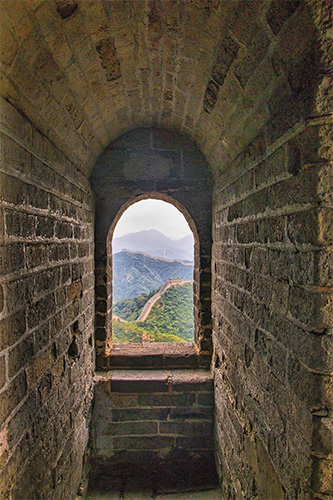
6. Innovation is the undertaking for multiple religions to coexist harmoniously in China. Against the backdrop of globalization at crossroads and rampant unilateralism and protectionism, China’s governance of religious affairs features the core idea of “guidance”, which is to incorporate governance of religious affairs into the national governance system, and actively guide religions to adapt to a socialist society in order to promote the harmonious coexistence of China's multiple religions. The fact that Chinese religious organizations and vast majority of religious followers actively dedicates to the construction of the shared future of the Chinese nation and “Belt and Road” as well as the community with a shared future for mankind, shows the advantage of socialism system with Chinese characteristics and debunks the so-called “China Threat” theory.
Always keeping up with time is the spiritual aspect of multiple religions to coexist harmoniously in China. This harmony has its roots in the traditional Chinese philosophy that fosters multiple, harmonious but diversified schools of thoughts. This harmony is also inseparable from the Chinese government’s efforts to formulate and implement the policy of religious freedom and to improve legal framework for the government-religion relations to reflect realities of the country. Since its founding, the Communist Party of China has insisted to combine the Marxist religious outlook and China’s reality, to develop relations with the religious communities on the basis of “political solidarity and respect for each other’s belief”. The CPC actively constructs new type of political-religious relations with Chinese characteristics, demonstrating the advantage of socialist path with Chinese characteristics, and resulting in the bankruptcy of “ the end of history” theory.
Exchange and integration are the value orientation of multiple religions to coexist harmoniously in China. The Chinese religious community inherits fine tradition of localization. Religious culture has become an integral part of the traditional Chinese ideology and culture. All religions advocate serving the society and benefiting the people, such as the Buddhist idea of “adorning the country and benefiting sentient beings”, the Protestant and Catholic ideas of “living out a life of light and salt” and “honoring the gods and benefiting people”, the Taoist idea of “loving the world and helping people”, the Islamic idea of “living happily and prosperously in present life and the next life” and so on. These ideas promote merging religions and Chinese culture and their continuous recreation and overturn the so-called theory of “clash of civilizations”.
Mutual learning is the essential and core requirement for multiple religions to coexist harmoniously in China. Historically, members of the Chinese nation have managed to rise above the differences of ethnicity, geology and religion and become united for thousands of years by cultural identity. The Chinese civilization has enabled harmony between religions and cultures by opposing exclusion and rejecting no foreign religion and culture. A community of civilizations is replacing universalism and thus breaks the Western theory of culture centrism.
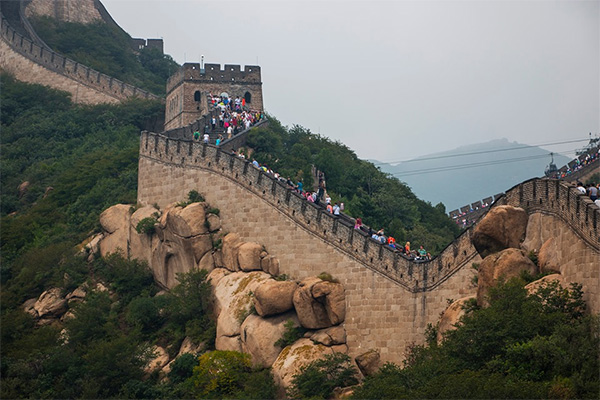
Peace and inclusiveness are ways of multiple religions to coexist harmoniously in China. All religions in China consciously resist and guard against all kinds of extremism, advocate fighting against terrorism, stopping war and killing, and strive for “a harmonious world where everyone appreciates and shares each other’s beauty”. China has always advocated learning from each other while respecting differences. China never exported its culture by force or sought hegemony. Even at the time when possessing the strongest national strength, China carried out no foreign military conquest. With widespread of "XXX First" and "de-globalization", the success of China's multi-religions pattern shows that civilizations can coexist peacefully and thus refutes the Western theory that a strong country is bound to seek hegemony.
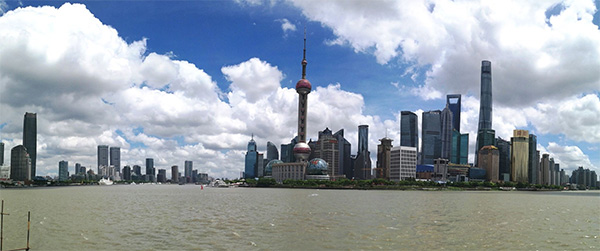
Our world is undergoing profound changes unseen in centuries. In the spirit of "taking wellbeing of the world as one’s own duty", Chinese President Xi Jinping put forwards the idea of building a community with a shared future for mankind, emphasizing the importance of respecting diversity of world civilizations, calling for transcending estrangement through exchanges between civilizations, transcending conflict of civilizations through mutual learning between civilizations, transcending superiority of one civilization over others with coexistence between civilizations. We should work together to build an open, inclusive, clean and beautiful world that enjoys lasting peace, universal security, and common prosperity.
H.E. Mr. Zhang Zuo, Ambassador of People's Republic of China
Скопје, 1ви јуни 2020 год.
Друго:
(Македонски превод)

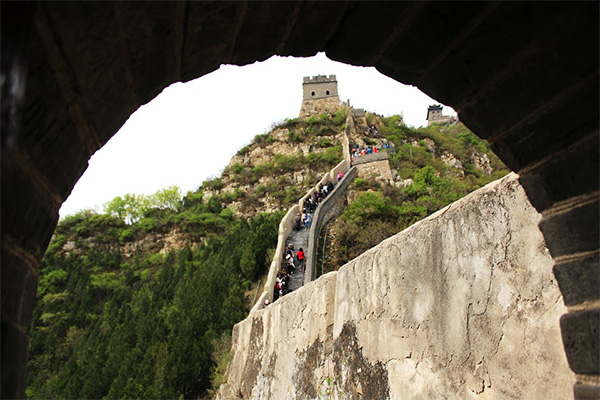

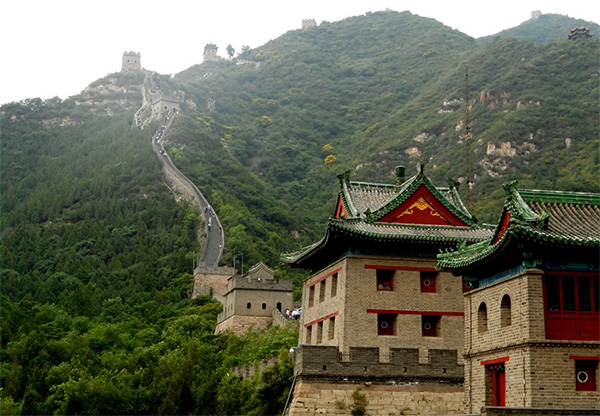
Значењето на хармоничниот соживот на верскиот плурализам во Кина (1)

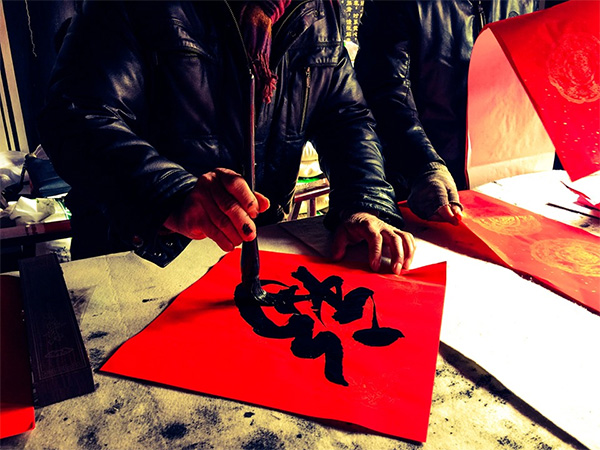
(Извадок)
Во моментов, светот е исправен пред големи промени какви што немало во изминатите сто години. оддржуваќи го ставот „да го преземе светот како своја должност“, кинескиот претседател Ши Џинпинг ја постави идејата за изградба на општата заедница на човечката судбина. Во идејата, тој посочи, дека мора да се почитуваат разноликоста на цивилизациите, мора да промовира комуникција помеѓу цивилизациите наместо цивилизациски јаз, наместо конфликти меѓу цивилизациите да постои взаемно учење, и да го реализираме соживотот на цивилизациите, а не супериорноста. Треба заеднички да работиме за градење на светот со траен мир, општа безбедност, заеднички просперитет, отвореност, толеранција, чистота и убавина.
Крај
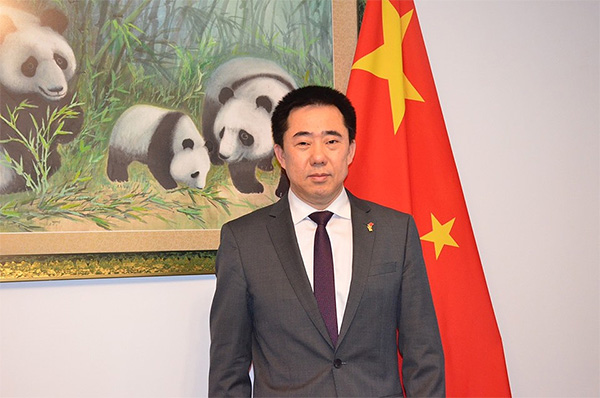 |
Биографија на Амбасадор Џанг Ѕуо
Роден во февруари 1969 во округот Шуанвеи во провинцијата Јунан, Проф. д-р по менаџмент.
1991-1996, Заменик Директор во Биро за религиозни работи, Административна Канцеларија на Чуџинг префектура, провинција Јунан
1996-2004, Заменик Директор, Директор, Биро за религиозни работи на провинцијата Јунан
2004-2010, Раководител на оддел при Канцеларијата за политика на истражувања, провинциски комитет на Јунан на Комунистичката партија на Кина (КПК)
2010-2010, Заменик Секретар на Окружниот комитет на КПК на Јаоан, префектура Чушионг, провинција Јунан
2010-2011, Заменик Секретар на Комитетот на округот Јонгшенг на КПК, Заменик-Градоначалник, вршител на должноста Градоначалник на округот Јонгшенг под градот Лијианг, провинција Јунан
2011-2013 Заменик Секретар на Комитетот на округот Јонгшенг на КПК и градоначалник на округот Јонгшенг под градот Лијианг, провинција Јунан
2013-2015 Секретар на Комитетот на округот Јонгшенг на КПК, градот Лијианг, провинција Јунан
2015-2017 Постојан член на Градскиот комитет на Лијианг на КПК и Секретар на Комисијата за политички и правни работи на Градскиот комитет на Лијианг на КПК, провинција Јунан
2017- 2019 Вонреден и ополномоштен Амбасадор на Народна Република Кина во Народна Република Бангладеш
2019- Вонреден и ополномоштен Амбасадор на Народна Република Кина во Република Северна Македонија
Оженет,татко на ќерка .










